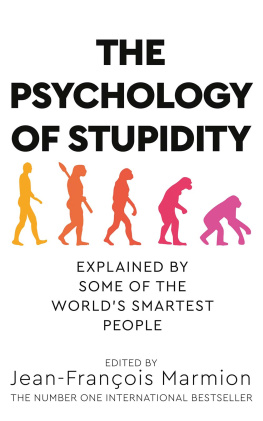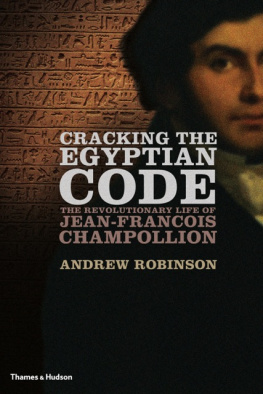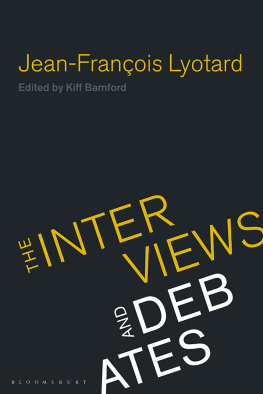Jean-François Gilmont - John Calvin and the Printed Book
Here you can read online Jean-François Gilmont - John Calvin and the Printed Book full text of the book (entire story) in english for free. Download pdf and epub, get meaning, cover and reviews about this ebook. year: 2016, publisher: TrumanStateUP, genre: Religion. Description of the work, (preface) as well as reviews are available. Best literature library LitArk.com created for fans of good reading and offers a wide selection of genres:
Romance novel
Science fiction
Adventure
Detective
Science
History
Home and family
Prose
Art
Politics
Computer
Non-fiction
Religion
Business
Children
Humor
Choose a favorite category and find really read worthwhile books. Enjoy immersion in the world of imagination, feel the emotions of the characters or learn something new for yourself, make an fascinating discovery.

- Book:John Calvin and the Printed Book
- Author:
- Publisher:TrumanStateUP
- Genre:
- Year:2016
- Rating:5 / 5
- Favourites:Add to favourites
- Your mark:
- 100
- 1
- 2
- 3
- 4
- 5
John Calvin and the Printed Book: summary, description and annotation
We offer to read an annotation, description, summary or preface (depends on what the author of the book "John Calvin and the Printed Book" wrote himself). If you haven't found the necessary information about the book — write in the comments, we will try to find it.
John Calvin and the Printed Book — read online for free the complete book (whole text) full work
Below is the text of the book, divided by pages. System saving the place of the last page read, allows you to conveniently read the book "John Calvin and the Printed Book" online for free, without having to search again every time where you left off. Put a bookmark, and you can go to the page where you finished reading at any time.
Font size:
Interval:
Bookmark:
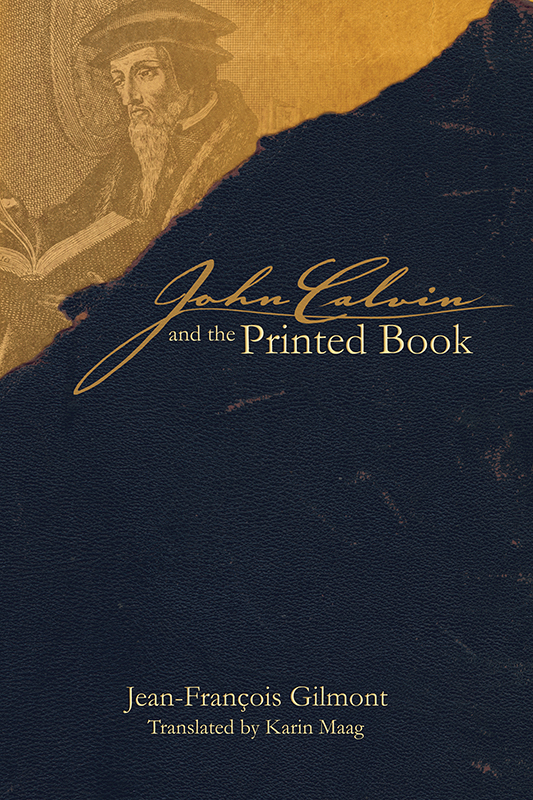
Habent Sua Fata Libelli
SIXTEENTH CENTURY ESSAYS & STUDIES SERIES
GENERAL EDITOR
RAYMOND A . MENTZER
UNIVERSITY OF IOWA
EDITORIAL BOARD OF SIXTEENTH CENTURY ESSAYS & STUDIES
ELAINE BEILIN
Framingham State College
MIRIAM U . CHRISMAN
University of Massachusetts, Emerita
BARBARA B . DIEFENDORF
Boston University
PAULA FINDLEN
Stanford University
SCOTT H . HENDRIX
Princeton Theological Seminary
JANE CAMPBELL HUTCHISON
University of Wisconsin-Madison
RALPH KEEN
University of Iowa
ROBERT M . KINGDON
University of Wisconsin, Emeritus
MARY B . M C KINLEY
University of Virginia
HELEN NADER
University of Arizona
CHARLES G . NAUER
University of Missouri, Emeritus
THEODORE K . RABB
Princeton University
MAX REINHART
University of Georgia
SHERYL E . REISS
Cornell University
JOHN D . ROTH
Goshen College
ROBERT V . SCHNUCKER
Truman State University, Emeritus
NICHOLAS TERPSTRA
University of Toronto
MARGO TODD
University of Pennsylvania
MERRY WIESNER - HANKS
University of Wisconsin-Milwaukee
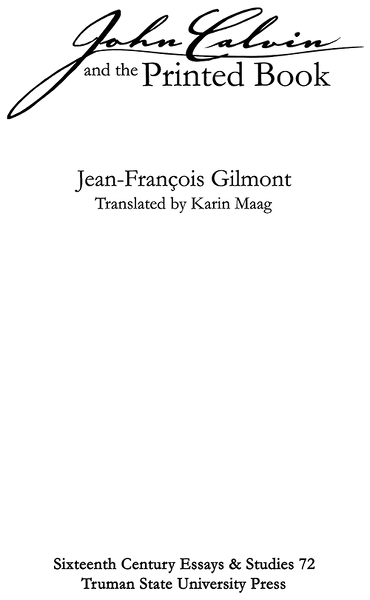
Copyright 2005 by Truman State University Press, Kirksville, Missouri
All rights reserved. Published 2005.
Sixteenth Century Essays & Studies Series
tsup.truman.edu
Translation of Jean-Franois Gilmont, Jean Calvin et le livre imprim, edition published by Droz, 1206 Geneva, Switzerland, copyright 1997 by Librairie Droz SA.
Cover illustration: "Ionnes Calvinus Natus novioduni Picardorum," in John Calvin, Joannis Calvini Noviodumensis opera omniain novem tomos digesta. Amsterdam: Johann Jacob Schipper, 1667, 1:*4v.
Cover and title page design: Teresa Wheeler
Type: AGaramond, copyright Adobe Systems Inc.
Printed by Thomson-Shore, Dexter, Michigan USA
The Library of Congress has catalogued the printed edition as follows:
Library of Congress Cataloging-in-Publication Data
Gilmont, Jean Franois.
[Jean Calvin et le livre imprim. English]
John Calvin and the printed book / Jean-Franois Gilmont ; translated by Karin Maag.
p. cm.(Sixteenth century essays & studies; v. 72)
Includes bibliographical references and index.
ISBN-13: 978-1-931112-56-7 (alk. paper)
ISBN-10: 1-931112-56-8 (alk. paper)
1. PrintingSwitzerlandGenevaHistory16th century. 2. Early printed booksSwitzerlandGeneva16th centuryBibliography. 3. Christian literaturePublishingEuropeHistory16th century. 4. Calvin, Jean, 1509-1564Bibliography. 5. Calvin, Jean, 1509-1564Books and reading. 6. ReformationSwitzerlandGeneva. 7. CensorshipSwitzerlandGeneva. 8. Geneva (Switzerland)Imprints. I. Tide. II. Series.
Z176.G2G55132005
686.2'092dc22
2005021531
No part of this work may be reproduced or transmitted in any format by any means without written permission from the publisher.
The paper in this publication meets the minimum requirements of the American National Standard for Information Sciences-Permanence of Paper for Printed Library Materials, ANSI Z39.48-1992.
Because of display limitations of e-readers, some special charcters (e.g., Greek or Hebrew letters, cedillas, characters in Eastern European languages, accents or other diacritical marks) may not display properly in the e-book version of this work.
Sequential numbers in square brackets [ ] in the body of the text refer to page numbers in the print edition; citations appeared as footnotes in print editon.
In the spring of 2002, at the request of Jean-Franois Gilmont, I began the translation of his work on Calvin and the world of printing, originally published by Droz in Geneva in 1997. I had previously served as translator and English-language editor for another work edited by Professor Gilmont, The Reformation and the Book, published by Ashgate in 1999. Professor Gilmont is one of the foremost experts on Calvin's writings and I deeply appreciated the opportunity to translate this current text.
I wish to thank five students at Calvin College who helped with various stages of the project over the course of four summers: Ruth Speyer (2002), Joshua Wierenga (2003), Jeff Rop and Allison Graff (2004), and Lauren Colyn (2005). They proofread sections and suggested changes, typed and verified footnotes, and helped to create the bibliography. Without their able assistance, the project would have taken much longer. Susan Schmurr, the Meeter Center program coordinator, also valiantly typed large sections of the text and helped work on the bibliography. I take responsibility for any remaining flaws in the translation.
I am also deeply grateful to Raymond Mentzer, general editor of the Sixteenth Century Essays and Studies series, and to the staff at the Truman State University Press for their interest in this work and their help throughout the publishing process.
It is my hope that this work will prove to be a valuable resource for English-speaking students, Reformation scholars, and general readers who want to learn more about what Calvin read and wrote, and how he interacted with the world of print.
Karin Maag
Grand Rapids, Michigan
July 2005
John Calvin was a landmark figure in the history of Christianity. Thanks to his strong personality, he established and shaped a confessional branch of the Christian church, a branch that has become firmly rooted and has flourished throughout the centuries.
At the same time, the Reformer from Noyon was himself rooted in a specific historical context. He influenced his contemporaries and future generations by making use of the techniques of his day.
In this work, I intend to analyze one of the media he used extensively, namely, printed books. This approach will prove useful both for Calvin scholars and for historians of print and printing. However, my aim in advancing our knowledge of this aspect of the Reformer's work is not to isolate printing from other forms of communication that Calvin used. Indeed, my plan is to link the theme of printing to other aspects of communication, such as public and private oral discourse and unpublished writing. This task is made easier thanks to the important work of the last fifty years on Calvin's sermons.
In establishing Calvin's relationship with printed books, the intention is not to focus on the content of his works, whether in terms of their style or the theological issues they address. Given the thorough research on Calvin's polemical writings carried out by Francis Higman there would be little point in revisiting these topics. Instead, my bibliographical-historical approach is intended to complement earlier research. When relevant, I will highlight the links between communication techniques and the author's style.
[x] In the same way, I will not deal explicitly with the theological content of Calvin's writings. However, when analyzing his means of communication, content-related questions are inevitable. Indeed, such investigations can sometimes shed new light on the Reformer's thoughts and lead to new issues for theologians to consider.
Examining Calvin as author and writer in his historical context leads to a series of questions: What kinds of messages did Calvin entrust to the printed word? What were his reasons for writing? Did he have any interest in the work of printers and booksellers? In what ways were his oral and written teachings linked? What connections were there between what he said and what he wrote?
Font size:
Interval:
Bookmark:
Similar books «John Calvin and the Printed Book»
Look at similar books to John Calvin and the Printed Book. We have selected literature similar in name and meaning in the hope of providing readers with more options to find new, interesting, not yet read works.
Discussion, reviews of the book John Calvin and the Printed Book and just readers' own opinions. Leave your comments, write what you think about the work, its meaning or the main characters. Specify what exactly you liked and what you didn't like, and why you think so.





